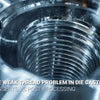3+2 Axis vs 5 Axis CNC Machining: Which Technology Best Fits Your Production Needs?

3+2 Axis vs 5 Axis CNC Machining: Which Technology Best Fits Your Production Needs?

In the competitive world of precision manufacturing, selecting the right CNC machining technology can significantly impact production capabilities, part quality, and overall business success. The choice between 3+2 axis and 5 axis CNC machining represents a critical decision for manufacturers across industries. This comprehensive guide examines the key differences, practical applications, and important considerations to help you determine which multi-axis machining approach aligns best with your specific production requirements.
3+2 axis CNC machining (positional 5-axis) locks rotational axes during cutting operations, making it ideal for multi-angle machining with investment costs between $150k-$300k for retrofit solutions. In contrast, full 5 axis (simultaneous) machining enables continuous motion of all axes during cutting, achieving superior tolerances (±0.0001") at significantly higher costs ($500k-$1M+). Your choice between these technologies should primarily consider part complexity, production volume, industry requirements, and budget constraints.
Both 3+2 and 5 axis machining offer substantial advantages over traditional 3-axis systems, but their operational differences make each option better suited for specific manufacturing scenarios. By understanding the fundamental distinctions in capabilities, costs, and applications, you can make an informed decision that enhances your manufacturing capabilities while maximizing return on investment. Let's explore these critical differences in detail.
[Table of Contents]
- What Are the Fundamental Differences in Axis Movement Between 3+2 and 5 Axis Machining?
- How Do Initial Investment and Operational Costs Compare Between Systems?
- What Precision and Complexity Capabilities Differentiate These Technologies?
- Which Industries Show the Strongest Adoption Trends for Each Technology?
What Are the Fundamental Differences in Axis Movement Between 3+2 and 5 Axis Machining?
The primary distinction between 3+2 axis and 5 axis CNC machining lies in how they approach multi-dimensional cutting operations. 3+2 axis machining (also known as positional 5-axis) utilizes three linear axes (X, Y, Z) plus two rotational axes that position the workpiece or tool at specific angles before cutting begins. In contrast, 5 axis machining enables simultaneous movement of all five axes during cutting operations, allowing for continuous tool positioning and complex contouring.
With 3+2 axis machining, the rotational axes lock into position during cutting operations, essentially creating a series of 3-axis operations from different angles. This approach differs significantly from 5 axis machining, where all axes can move continuously and simultaneously during cutting, enabling complex contours and curved surfaces to be machined with superior efficiency. This key operational distinction fundamentally impacts the types of parts each technology can effectively produce and the production methods used to create them.
The practical implications of these movement differences become evident when examining specific applications. 3+2 axis machining excels at accessing multiple faces of a prismatic part with reduced setup time, offering significant advantages over traditional 3-axis machining. However, 5 axis simultaneous machining provides superior capabilities for complex sculptured surfaces, such as turbine blades, impellers, and aerospace components with compound contours. Additionally, 5 axis systems typically enable better tool engagement angles, reducing tool deflection and improving surface finish on complex geometries, though at the cost of more sophisticated programming requirements and higher initial investment.
How Do Initial Investment and Operational Costs Compare Between Systems?
Cost considerations represent a crucial factor when evaluating advanced CNC machining technologies. The financial comparison between 3+2 axis and 5 axis systems extends well beyond initial purchase price to include implementation, programming complexity, maintenance requirements, and long-term operational expenses. These factors collectively influence the total cost of ownership and potential return on investment for manufacturing operations.
The price difference between these technologies is substantial, with 3+2 retrofits typically costing between $150,000 and $300,000, while full 5 axis machines command $500,000 to over $1 million depending on size, precision capabilities, and manufacturer. Beyond purchase price, maintenance costs for 5 axis systems tend to be 25-40% higher than 3+2 configurations due to more complex control systems and additional wear points in the simultaneous movement mechanisms. However, for certain complex components, the operational efficiencies gained from 5 axis machining often offset these higher costs through reduced cycle times and superior part quality.
When evaluating long-term financial implications, manufacturers must consider programming complexity and operator training requirements. 5 axis programming typically requires 30-50% more CAM programming time compared to 3+2 operations for similar parts, necessitating more advanced CAM software and specialized expertise. These additional programming costs can significantly impact overall production economics, particularly for small to medium batch sizes. For manufacturers handling diverse part families with varying complexity levels, 3+2 configurations often provide a more cost-effective solution, while shops specializing in complex aerospace or medical components frequently justify the higher investment in full 5 axis capabilities through premium pricing and production efficiency gains.
What Precision and Complexity Capabilities Differentiate These Technologies?
Manufacturing precision and part complexity capabilities vary significantly between 3+2 axis and 5 axis CNC machining systems. These differences directly impact the types of components that can be effectively produced on each platform, making precision capabilities a crucial consideration when selecting appropriate machining technology for specific applications.
5 axis simultaneous machining typically achieves tolerances of approximately ±0.0001" for aerospace components and other high-precision applications, representing the gold standard for complex contoured surfaces. By comparison, 3+2 axis machining generally delivers tolerances around ±0.0005" for angled features in molds and dies, making it better suited for parts with distinct angles rather than continuous curves. This precision difference becomes particularly significant when manufacturing components with compound contours, where 5 axis capabilities enable superior surface finish and dimensional accuracy.

Beyond basic tolerance specifications, part complexity represents another critical differentiating factor between these technologies. 5 axis simultaneous machining excels at creating complex three-dimensional contours, undercuts, and features that would be impossible to access with 3+2 positioning. This capability proves invaluable for components like turbine blades, orthopedic implants, and automotive dies with compound curved surfaces. Meanwhile, 3+2 axis machining delivers excellent results for parts with multiple flat surfaces at various angles, such as prismatic components, housings, and fixtures. When evaluating precision requirements, manufacturers must consider not only numerical tolerance specifications but also the geometric characteristics of their target components to determine which technology provides the optimal solution.
Which Industries Show the Strongest Adoption Trends for Each Technology?
Industry adoption patterns for 3+2 axis and 5 axis CNC machining technologies reveal interesting trends in manufacturing priorities across different sectors. These patterns reflect the specific production requirements, component geometries, and economic considerations that drive technology selection in various manufacturing environments.
According to 2025 projections, the aerospace industry demonstrates the strongest preference for 5 axis technology with a 68% adoption rate, compared to just 22% for 3+2 axis systems. This strong preference stems from the aerospace sector's demand for complex contoured components with extremely tight tolerances. Conversely, the medical device industry shows more balanced adoption with 48% utilizing 3+2 axis systems for orthopedic implants and surgical instruments. Automotive manufacturers also demonstrate significant adoption of both technologies, with 55% using 5 axis systems for complex dies and prototypes versus 35% employing 3+2 axis machines for production components.
These adoption trends translate directly to tangible business results, with shops utilizing 5 axis systems reporting 18-25% higher profit margins on complex parts compared to those using 3+2 axis machining. However, these premium margins must be balanced against the higher investment costs and increased operational complexity. The global CNC market's projected growth to $36.33 billion by 2029 (5.3% CAGR) indicates expanding opportunities for both technologies, with manufacturers increasingly adopting multi-axis capabilities to address growing demand for complex components. For manufacturers serving multiple industries, understanding these sector-specific adoption patterns provides valuable context for technology investment decisions aligned with target markets and growth strategies.
Conclusion
The choice between 3+2 axis and 5 axis CNC machining ultimately depends on specific manufacturing requirements, part complexity, production volume, and budget constraints. 3+2 axis systems offer cost-effective multi-angle machining with simplified programming requirements and lower initial investment, making them ideal for manufacturers producing components with distinct angled features. Meanwhile, 5 axis simultaneous machining provides superior capabilities for complex contoured surfaces and intricate geometries, though at significantly higher cost and programming complexity.
When evaluating these technologies, manufacturers should carefully consider their typical part geometries, tolerance requirements, production volumes, and available programming expertise. For many organizations, the optimal approach involves strategically incorporating both technologies to address different manufacturing challenges, or selecting a primary technology that addresses the majority of their production requirements while outsourcing specialized components requiring alternative capabilities.
[External Links Recommendation]
[simultaneous 5 axis CNC machining](https://www.methodsmachine.com/blog/what-is-5-axis-simultaneous-contouring/)[^1]
[precision manufacturing](https://www.ny-engineers.com/blog/what-is-precision-manufacturing-and-when-is-it-important-to-use)[^2]
[3+2 axis CNC Machining](https://www.mmsonline.com/articles/an-overview-of-3-2-machining)[^3]
[positional 5 axis CNC Machining](https://www.fictiv.com/articles/what-is-5-axis-cnc-machining-and-how-does-it-work)[^4]
---
[^1]: This link will help you grasp the mechanics and advantages of simultaneous 5 axis machining, crucial for advanced manufacturing processes.
[^2]: Understanding precision manufacturing is key to appreciating its role in producing high-quality components across various industries.
[^3]: Explore this link to understand the benefits and applications of 3+2 axis CNC Machining in various industries.
[^4]: Learn about positional 5 axis CNC Machining to see how it enhances precision and efficiency in manufacturing processes.
-
Posted in
5 Axis CNC Machining





